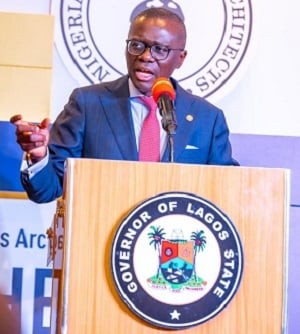I’ve taken Lagos to higher height – Sanwo-Olu
Lagos State Governor Babajide Sanwo-Olu has given a scorecard of his administration, 731 days after he took the oath of office.
Dignitaries gathered yesterday at the State House in Ikeja to listen to efforts taken in the last two years to fulfil the government’s development plans for the state, hinged on the THEMES agenda.
Themes stands for Traffic Management and Transportation; Health and Environment; Education and Technology; Making Lagos a 21st Century City; Entertainment and Tourism; Security and Governance.
To support the governor were his wife, Ibijoke, Deputy Governor Obafemi Hamzat, his wife, Oluremi, members of the State Executive Council, Speaker of the House of Assembly, represented, and his other aides.
The event, titled ‘Sanwo-Olu: 731 Days and Beyond, The State-Of-The-State Address’, was also attended by former governors and deputy governors, royal fathers, technocrats, media moguls and a host of others.
Governor Sanwo-Olu described the state as a massive construction site due to ongoing infrastructural works.
He said his government has made remarkable achievements in health (ongoing construction of the Massey Children Hospital, fight against COVID-19, EKOTELEMED, etc); transportation (First and Last Mile Buses; Lagferry boats, modern bus terminals, etc); education; technology, energy, environment, among others.
Sanwo-Olu said 100 public schools and 12 public hospitals have been connected to the free internet connectivity provided by the government. Of the 3,000km fibre optic cables to be laid across the state, 1,800km has been covered.
The governor promised that more schools will be built. He said new roads were built and old ones rehabilitated, urging the people to keep supporting his administration.
He said they should bear the temporary pains as it changes the face of Lagos.
Sanwo-Olu: said: “Our achievements in the last 731 days are laudable, but we have put them in our past because of the enthralling brightness of the years ahead.
“Lagos is 0.4 per cent of Nigeria’s total landmass, with a population of 22 million, representing about 10 per cent of the country’s total population. Looking at the interaction between these figures, one will notice an obvious disproportion between population size and habitation space. This, among other reasons, explains the perennial congestion on our roads. As a government, we have undertaken several innovative means of ensuring that citizens’ travel experience is palatable.” (The Nation)


